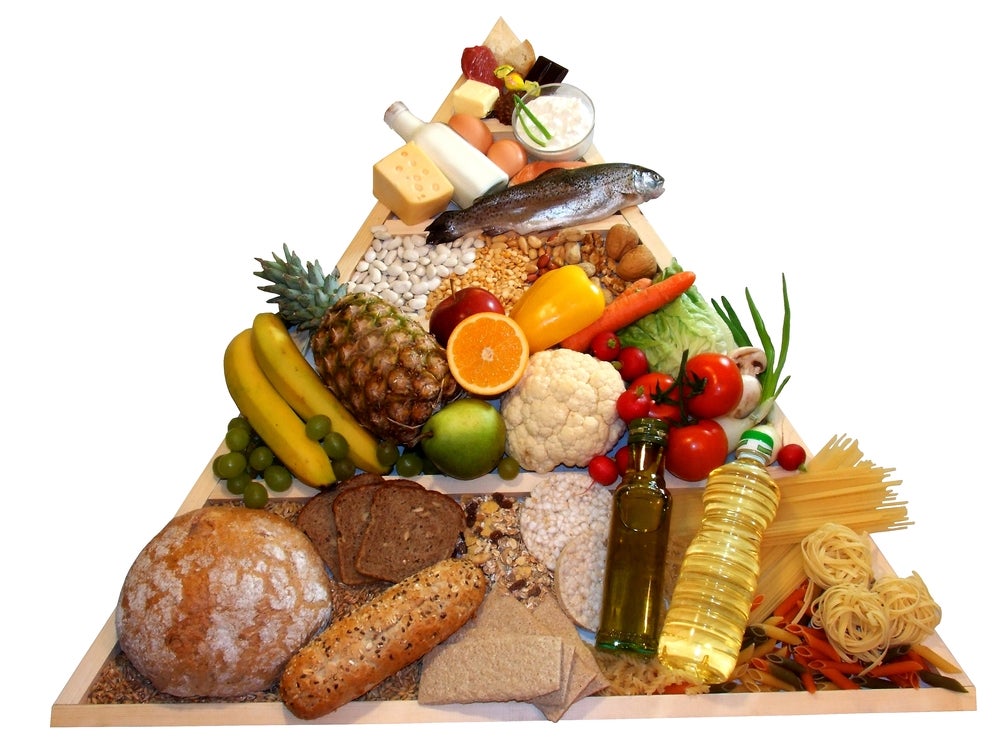The 6 Basic Nutrition Needs of a Triathlete

Photo: <a href=http://shutterstock.com>Shutterstock.com</a>
Q: This will be my second season in triathlon, and I’m realizing that my daily nutritional intake is something I should pay more attention to, even before the season starts. What are my basic nutrition needs as a triathlete?
A: Meeting our nutritional requirements is a daily puzzle: Ideally how many servings should we be consuming from each food group, and how should we be distributing them for optimal energy and performance? Let’s review:
Carbohydrates provide our energy foundation. In early-season training, most triathletes need 6–9 servings of grains or carbs daily. Each serving consists of a 1/2 cup of cooked beans, grains, potato, corn, peas or one slice of (ideally whole-grain) bread. Try to space them out, eating 1–2 servings with each meal or snack, especially with both your pre- and post-workout meal or snack.
Fruits also provide carbohydrate energy, but I separate them because we want to ensure we include 3–5 servings daily. One can be juice, and the rest whole fruits—one tennis ball-sized apple, 3/4 cup of berries, five slices of dried mango each count as 1 serving. Stick to a maximum of 1–2 servings of fruit at any one time.
Enjoy 3–5 servings of vegetables daily. One serving equals a 1/2 cup of cooked veggies, a cup of raw veggies or two cups of leafy greens. Include vegetables with 2–3-plus meals or snacks daily for optimal digestion.
RELATED: Easy Ways To Eat More Veggies
Two servings of (lean) protein should be included daily, spread out over two meals. The serving size for meat protein should be the size of the palm of your hand. If substituting vegetarian sources, include 3–4 ounces of tofu, or an equal portion of beans, lentils or another high-protein grain for each.
If you tolerate dairy, aim for 2–3 servings daily. A single serving is one cup of yogurt or 1.5 ounces of cheese. If you do not include dairy in your diet, then substitute this category for an additional serving of each protein and carb.
Finally, remember to include healthy, anti-inflammatory fats such as 1/4 avocado, two tablespoons hummus, 5–6 olives or two teaspoons other fat or oil 3–5 times daily.
Use this as a general guide to get you started—adjust your intake up or down depending on training volume, desired weight loss or gain and training period. Seek the advice of a registered sports dietitian (C.S.S.D.) if you desire an individualized meal plan.
RELATED: Five Tips For Maintaining Your Daily Diet
Lauren Antonucci, R.D., is a board-certified specialist in sports dietetics, three-time Ironman and founding director of Nutrition Energy in NYC.
If you’d like to have your nutrition questions answered on this page, send an email to fuel@competitorgroup.com.